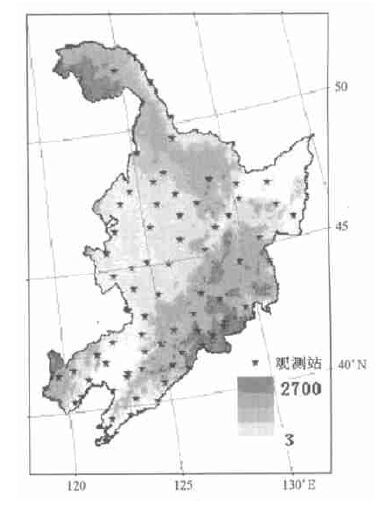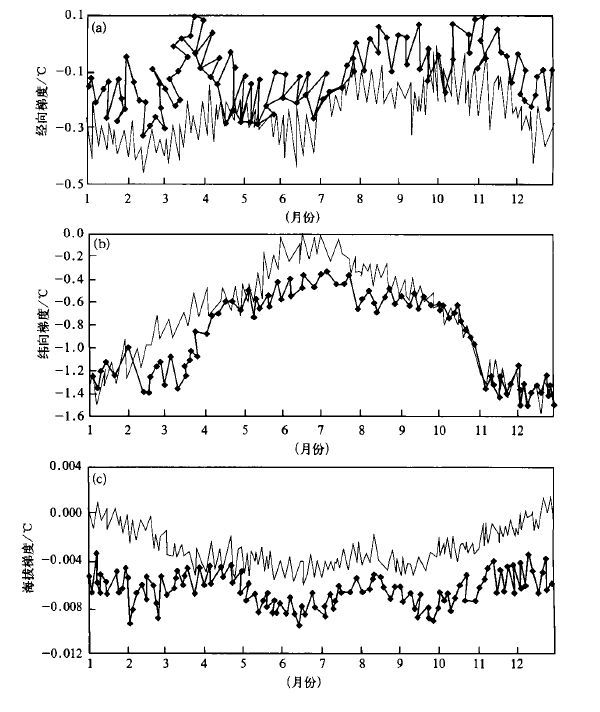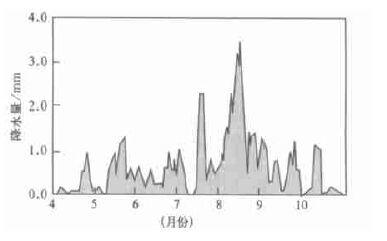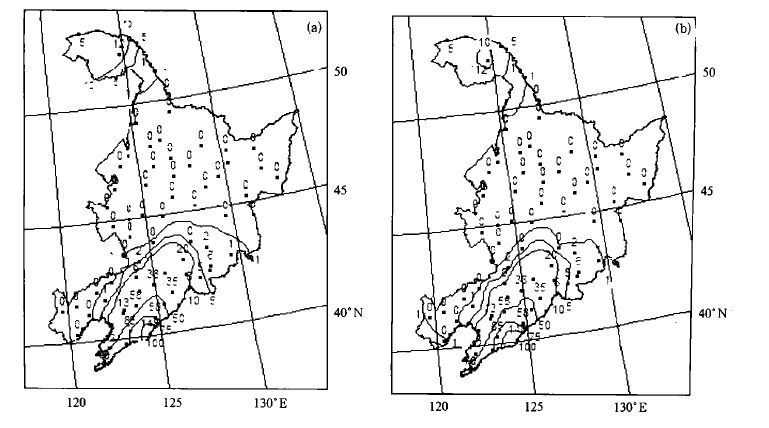东北地区逐日气象要素的空间插值方法应用研究
SPATIAL INTERPOLATION METHODS OF DAILY WEATHER DATA IN NORTHEAST CHINA
-
摘要: 针对作物生长动力模型区域应用时对高精度格点逐日气象要素输入值的需要,以东北地区为例,选用克立格法 (Kriging)、以经纬度分布方向为权重的距离权重反比法(IDW)及带高度梯度订正的距离权重反比法(GIDW)3种插值方法进行有限气象站点4~10月逐日气象要素空间插值方法研究,并进行插值的统计量分析和估值的交叉验证。结果表明,对温度而言,GIDW方法估值精度较高,插值结果的平滑程度适中,插值结果分布趋势也较为接近实际站点的分布。对降水而言,IDW估值精度高于Kriging, 而且插值结果的平滑程度较小,更适合于日降水量的空间插值。GIDW、IDW估值精度较高的原因是研究中考虑到日最高温度、最低温度和降水量的经向、纬向梯度、海拔高度梯度存在明显的季节性变化,采用了根据气象要素经纬度方向确定权重,以及根据气象要素高度梯度年内变化进行高度订正的结果。Abstract: Aimed at requirement for daily weather data with high resolution which is used to scaling up the crop growth simulation models, the spatial interpolation methods of daily weather data from April to October in Northeast China are studied using ordinary Kriging and other two relatively simple methods: inverse distance weighting (IDW) technique with weighting of longitude and latitude, and gradient of height plus inverse-distance-weighting (GIDW) technique. The statistics analysis for interpolated values and cross verification for estimated values are made. The results indicate that for temperature, the precision of the evaluated value is the highest, and the smoothness is moderate, in addition, the space distributing trend of the interpolated result is more close to the actual data using GIDW method. For precipitation, the precision of the evaluated value with IDW method is higher than that with the Kriging method, and the smooth level of the interpolated result is smaller, and it is more fit to the interpolation of the daily precipitaion. The cause of the higher precision of the vealuated values with GIDW and IDW methods is that the obvious season changes in longitude, latitude and sea-level-elevation gradient of the daily maximum temperature, minimum temperature and precipitation are considered, the weights in longitude and latitude for meteorological factors are determined, and the meteorological factors are also corrected by daily sealevel-elevation gradient.
-
Key words:
- Northeast China;
- Daily weather data;
- Interpolation;
- Kriging;
- IDW
-
表 1 2000年4~9月日最高温度和日最低温度3种插值方法的估值检验结果

表 2 2000年4~9月日降水量2种插值方法的估值检验结果

表 3 2000年日最高温度和日降水量插值方法结果的统计量

-
[1] 尚宗波, 高凉, 杨奠安.利用中国气候信息系统研究年降水量空间分布规律.生态学报, 2001, 21(5):689-694. http://www.cnki.com.cn/Article/CJFDTOTAL-STXB200105028.htm [2] 周锁铨, 缪启龙, 吴息, 等.日照百分率的小网格分析方法.气象科学, 1993, 13(2):201-209. http://www.cnki.com.cn/Article/CJFDTOTAL-QXKX199302010.htm [3] 王绍强, 朱松丽, 周成虎.中国土壤土层厚度的空间变异性特征.地理研究, 2001, 20(2):161-167. http://www.cnki.com.cn/Article/CJFDTOTAL-DLYJ200102004.htm [4] 李海滨, 林忠辉, 刘苏峡. Kriging方法在区域土壤水分估值中的应用.地理研究, 2001, 20(4):446-452. http://www.cnki.com.cn/Article/CJFDTOTAL-DLYJ200104009.htm [5] 梁天刚, 王兮之, 戴若兰.多年平均降水资源空间变化模拟方法的研究.西北植物学报, 2000, 20(5):865-862. http://www.cnki.com.cn/Article/CJFDTOTAL-DNYX200005026.htm [6] 魏凤英, 曹鸿兴.我国月降水和气温网格点资料的处理和分析.气象, 1994, 20(10):26-30. http://www.cnki.com.cn/Article/CJFDTOTAL-QXXX410.004.htm [7] 林忠辉, 莫兴国, 李宏轩, 等.中国陆地区域气象要素的空间插值.地理学报, 2002, 57(1):47-56. http://www.cnki.com.cn/Article/CJFDTOTAL-DLXB200201005.htm [8] 汤国安, 赵牡丹.地理信息系统.北京:科学出版社, 2002.117-118. -


 设为首页
设为首页 加入收藏
加入收藏



 下载:
下载:






